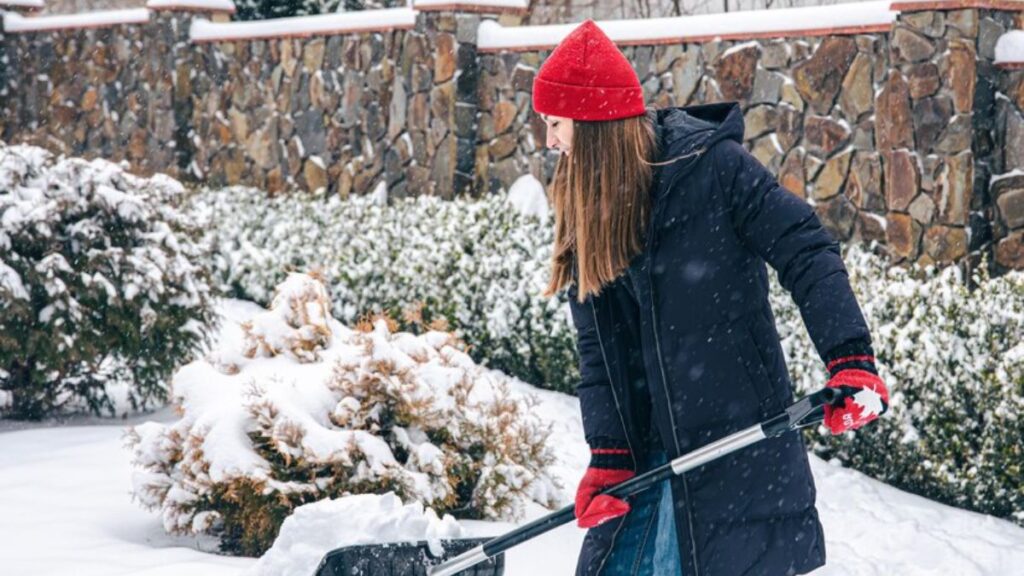Winter brings unique challenges to lawn care and landscaping, but with the right approach, you can maintain a healthy yard all season. This winter, trends lean toward sustainability, practical landscaping solutions, and efficient snow clearing methods to keep your outdoor space both beautiful and functional. Let’s explore the top winter landscaping strategies and techniques for snow clearing to help your yard thrive through the cold months.
Key Winter Lawn Care Trends for 2024
Winter lawn care is more than simply surviving the cold—it’s about using thoughtful strategies that ensure long-term resilience and sustainability. Here are some of this season’s essential practices.
Soil Health and Winter Nutrition
Maintaining healthy soil is crucial for lawn vitality, even in winter. This year, more homeowners are investing in organic soil amendments and preparing their lawns with slow-release, nutrient-rich fertilizers.
Benefits of Slow-Release Fertilizers
Slow-release fertilizers designed for winter gradually deliver nutrients, ensuring that the soil remains nourished and the grass roots stay healthy. Winter-specific fertilizers are often high in potassium, which strengthens roots and prepares the grass to thrive come spring.
Organic Mulching for Insulation
Organic mulches, such as compost, wood chips, and straw, are popular this winter for providing soil insulation and enriching the ground. By covering exposed soil, mulches regulate temperature and moisture, giving your yard a natural layer of winter protection.
Winter Landscaping Techniques to Protect and Beautify Your Yard
Winter landscaping can enhance your property’s appearance while protecting it from seasonal stress. The trends this year include sustainable practices, strategic hardscaping, and evergreen elements that keep your yard attractive through winter.
Snow Clearing Without Damaging the Lawn
Snow clearing is essential for winter landscaping but can also damage your lawn if not done carefully. This year, homeowners are prioritizing lawn-friendly snow clearing techniques that protect both the grass and hardscaping.
Use of Pet-Safe De-Icers
Traditional de-icers, like rock salt, can damage both soil and grass. As a result, more homeowners are switching to pet-safe, lawn-friendly de-icing solutions. These products, often made from calcium magnesium acetate or organic compounds, prevent ice build-up without harming the lawn or landscape.
Avoiding Excessive Traffic on Grass
Walking on frozen or snow-covered grass can damage the turf and compact the soil, especially when wet. To prevent this, mark pathways and direct foot traffic onto hardscaped paths or stepping stones. Adding paths as part of your winter landscaping strategy also minimizes soil compaction and keeps the yard looking polished.
Decorative Mulching and Hardscaping
Decorative mulch adds both function and aesthetic appeal to your winter landscape. This year, textured and colored mulch—such as cedar chips or river rock—helps maintain your yard’s curb appeal while also insulating plant beds and trees.
Best Practices for Decorative Mulching
- Apply a two- to three-inch layer: Adding this layer to flower beds and around trees offers insulation for roots and helps retain soil moisture.
- Coordinate with hardscaping: Integrate paths, rocks, or stone borders into your winter landscape to create a neat, organized look.
- Use color and texture: Choose mulch that complements your home and adds visual interest.
Winter Lawn Care and Landscaping for a Healthy Spring Start
Winter preparation sets your lawn up for spring success. Here are the top ways to ensure your yard has the best possible start when warmer weather returns.
Dormant Seeding for Lush Spring Grass
Dormant seeding is growing in popularity as a winter landscaping strategy for ensuring thick grass growth come spring. This process involves spreading grass seed in late fall or early winter, where it remains dormant until temperatures rise, leading to early spring germination.
Advantages of Dormant Seeding
- Earlier Green-Up: Dormant seeds germinate as soon as conditions are right, giving you a green lawn earlier in spring.
- Increased Weed Resistance: Early spring growth from dormant seeding helps crowd out weeds naturally.
- Enhanced Lawn Density: Dormant seeding thickens your lawn, making it more resilient to foot traffic and seasonal stress.
Topdressing for Soil Enrichment
Topdressing involves applying a thin layer of compost or organic material to your lawn, enriching the soil without over-fertilizing. This technique is especially beneficial for winter landscaping as it slowly releases nutrients into the soil.
Tips for Topdressing
- Use a light layer: A quarter-inch of compost or soil is sufficient for soil enrichment.
- Combine with dormant seeding: Topdressing with dormant seeding improves soil structure and promotes faster germination.
- Choose organic materials: Use high-quality compost or aged manure for optimal soil health.
Sustainable Snow Clearing for a Healthier Yard
Efficient snow clearing methods are essential to maintaining a winter landscape. This year’s snow clearing trends focus on safe, eco-friendly techniques that preserve both your yard and the environment.
Natural Alternatives to Traditional De-Icers
Standard de-icing salts can damage grass and soil, which is why more homeowners are choosing natural snow clearing solutions to protect their lawns.
Pet-Friendly and Lawn-Safe De-Icers
De-icers made with ingredients like sand, clay, and calcium magnesium acetate (CMA) are safer for both pets and plants. These options prevent ice without contaminating soil or harming grass.
Using Sand or Ash for Traction
In areas with minimal ice, applying sand or fireplace ash can create traction on walkways without using chemicals. This approach keeps walkways safe without impacting soil quality or grass health, making it a top choice for eco-conscious homeowners.
Designating Paths for Efficient Snow Clearing
Winter landscaping often includes planning safe, accessible walkways that can be easily cleared of snow. By incorporating stone paths or marked trails, you can guide traffic away from sensitive areas of your yard, reducing soil compaction and minimizing lawn damage.
Final Tips for Successful Winter Lawn Care and Landscaping
With a few final adjustments, you can ensure your winter landscaping and lawn care routine leads to a beautiful, healthy yard next season.
- Limit Watering
Avoid overwatering in winter, as dormant grass requires less moisture. Excess water can freeze, causing damage to roots and creating an environment for mold. - Store Tools and Prep Equipment
Clean and store all lawn care tools before the ground freezes, as well-maintained equipment will be ready to go when spring arrives. - Consider Professional Snow Clearing and Winter Landscaping Services
If you need help with seasonal maintenance, consider hiring a snow clearing or winter landscaping service. Local professionals can help with everything from eco-friendly de-icing to winterizing your lawn, ensuring a well-maintained, beautiful yard through the cold season.
Winter 2024 brings exciting trends in sustainable snow clearing, soil health, and lawn protection. With these practices in place, your yard will look great through winter and be well-prepared for a lush spring start. Whether you’re tackling it yourself or seeking professional support, the latest trends can help you create a winter landscape design that is both functional and beautiful.







